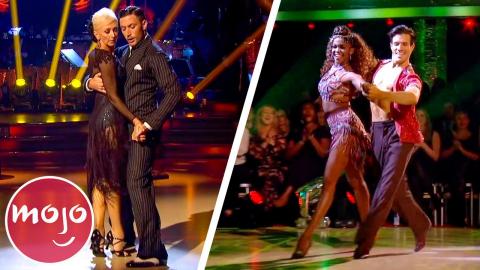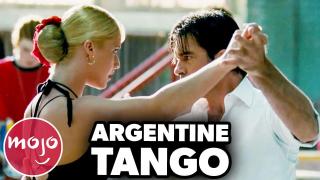Top 10 Hardest Latin Dances to Pull Off

#10: Bolero
This gorgeous Cuban dance emanates sensuality and romance with every step. Picture dancers swaying gracefully to a gentle melody, their movements synchronized to a unique slow-quick-quick rhythm. While it bears some resemblance to the Rumba, Bolero can be differentiated by its unique counts, rise and fall, and contra body action; some might even argue that it’s the more passionate of the two styles. Mastering Bolero requires more than just technical prowess. It demands a perfect partnership, an intuitive response to rhythm changes, and a skillful alteration of melodies, all infused with intense, raw emotion. A well-performed routine can leave spectators breathless, entranced by the tale of love and fervor unfolding before them.
#9: Lambada
Originating in Brazil, the Lambada emerged from the fusion of the traditional Carimbó dance with various other Latin dance influences. It gained widespread popularity in the ‘80s and ‘90s, partly due to the song of the same name by the band Kaoma. Lambada is characterized by its intricate and rapid hip movements, fast footwork, lively rhythm, and close partner connection. Dancers must isolate movements of their upper and lower bodies while moving in harmony with their partners. This improvised dance style requires effective communication and anticipation of each other’s steps to maintain a seamless flow. With its passionate allure, Lambada requires confidence and enthusiasm on the dance floor, leaving no room for shyness.
#8: Salsa
Salsa is an animated and diverse dance style originating in Cuba. It continued evolving as it spread across the Americas, with various communities adding their own distinct spice to the mix. Mastering its rhythms requires more than just basic steps. Will you embrace the rapid footwork of Salsa Caleña, the elegance of New York Style, or the playful flair of Puerto Rican Salsa? No matter your style, you’ll find precision, coordination, complexity, and syncopated beats at the core of most variations. As a social dance, the choreography is often improvised, so being sharp, agile, and quick on your feet – both literally and figuratively – is essential to burn up the dance floor.
#7: Paso Doble
When you see the expressions on the faces of dancers during a Paso Doble, you know they mean business! This style is all about strength, drama, and intensity, mimicking a bullfight in a musical interpretation. Picture one partner as the matador and the other as the cape. Attention to posture is vital; hips forward over the balls of your feet and arch your back— picture a banana’s curve, if you will. A slight tilt to the left of your partner is also common. On top of that, you have to stay perfectly connected while moving as one. Mastered skillfully, Paso Doble radiates confidence and expressiveness, captivating every eye in the room.
#6: Cha-Cha-Cha
Top 10 Hardest Partner Dances to Pull Off
One-two-Cha-Cha-Cha, that’s all there is to it, right? Think again! Sure, it’s one of the freer Latin dance styles, but there’s still a lot to wrap your head around. Let’s start with the rhythm; it’s not just a one-two but three full beats and two-half ones you need to count. And when it comes to footwork, it’s quite specific. You’re supposed to keep your feet pointed outward, and land on the inside of your foot quickly before shifting your weight back to the middle. No heel leads allowed here! Feeling frazzled yet? Us too! But wait, there’s more. Get those hips moving; this is a Latin dance, after all! Still up for the cha-cha-challenge now?
#5: Mambo
Mambo, a vibrant dance, traces its roots back to 1940s Cuba, gaining popularity across Latin America and beyond due to the energetic music now synonymous with the style. Initially, it was all about feeling the rhythm and moving freely, but over time, it became more structured, incorporating specific rhythms and steps. What makes Mambo special is its unique timing—there’s a break step on the first or second beat depending on the Mambo, followed by a quick-quick-slow rhythm. The dance demands detailed footwork, speed, and precise timing. Mastering the technique requires impeccable coordination and a great musical ear. Once you nail the steps, the next challenge is making onlookers believe you’re effortlessly expressing the music through your body movements.
#4: Jive
The Jive, hailing from the early 20th-century U.S. by African Americans, is often considered a Latin dance despite originating in Swing. Defined by its high-energy triple step, it requires exceptional athleticism and stamina. Amid a dizzying tempo, there’s still plenty of technique to remember. Kicks originate from the hip, flicks come from your knees, sharp retraction is crucial, and staying on your toes— in every sense of the phrase— is key. And don’t forget that continuous, peppy bounce or executing sharp, fluid movements throughout. One misstep could spell disaster, but it looks effortlessly cool when done right. Just trying to piece it all together makes our heads spin.
#3: Rumba
While the Rumba’s tempo might not match the Jive’s energy, don't be fooled—it’s far from easy. In fact, its slower pace amplifies every move, from the careful placement of the feet to the extension of the fingertips. Rumba demands precise techniques, including controlled hip isolations and graceful footwork— heck, it will even make you rethink the way you walk! Perfect posture, balance, and well-timed weight shifts are also important for seamless flow, especially when every move is so controlled. A perfect rumba oozes elegance, sensuality, and romance, creating a visually stunning experience. But the real challenge is feeling sensual while your mind juggles choreography, technique, and staying on beat.
#2: Argentine Tango
Ah, the Argentine Tango, a dance of intense passion and fiery energy. Originating from the working-class neighborhoods of 19th-century South America, it's a dance that speaks volumes without words. The captivating social dance is known for its intricate moves and deep cultural roots. While it has a specific rhythm and basic footwork, its true magic lies in the unspoken dialogue between partners. Picture a silent yet heated conversation conveyed through subtle movements and shared emotions. Being in tune with your partner is crucial; a misplaced Gancho can be pretty painful! When performed at its best, the Argentine Tango radiates such passion and intensity that it will undoubtedly leave you utterly entranced.
#1: Samba
Samba is more of a freestyle dance where you can let loose and enjoy yourself, so it must be a breeze, right? HA! Where do we even begin? It's a whirlwind of energy and rhythm, from the lively tempo to the quick-quick-slow footwork to those sassy hip sways. Staying light on your toes is essential for nailing that emblematic bounce and keeping up with tempo shifts. Every part of your body is engaged, from your arms to the balls of your feet. Without precision, you might resemble one of those flailing sky dancers. And trust us, it's lightning-fast! But once you master it, the Carnaval will be calling. Is there a Latin dance you've always wanted to learn but found it a bit intimidating? Let us know in the comments.


